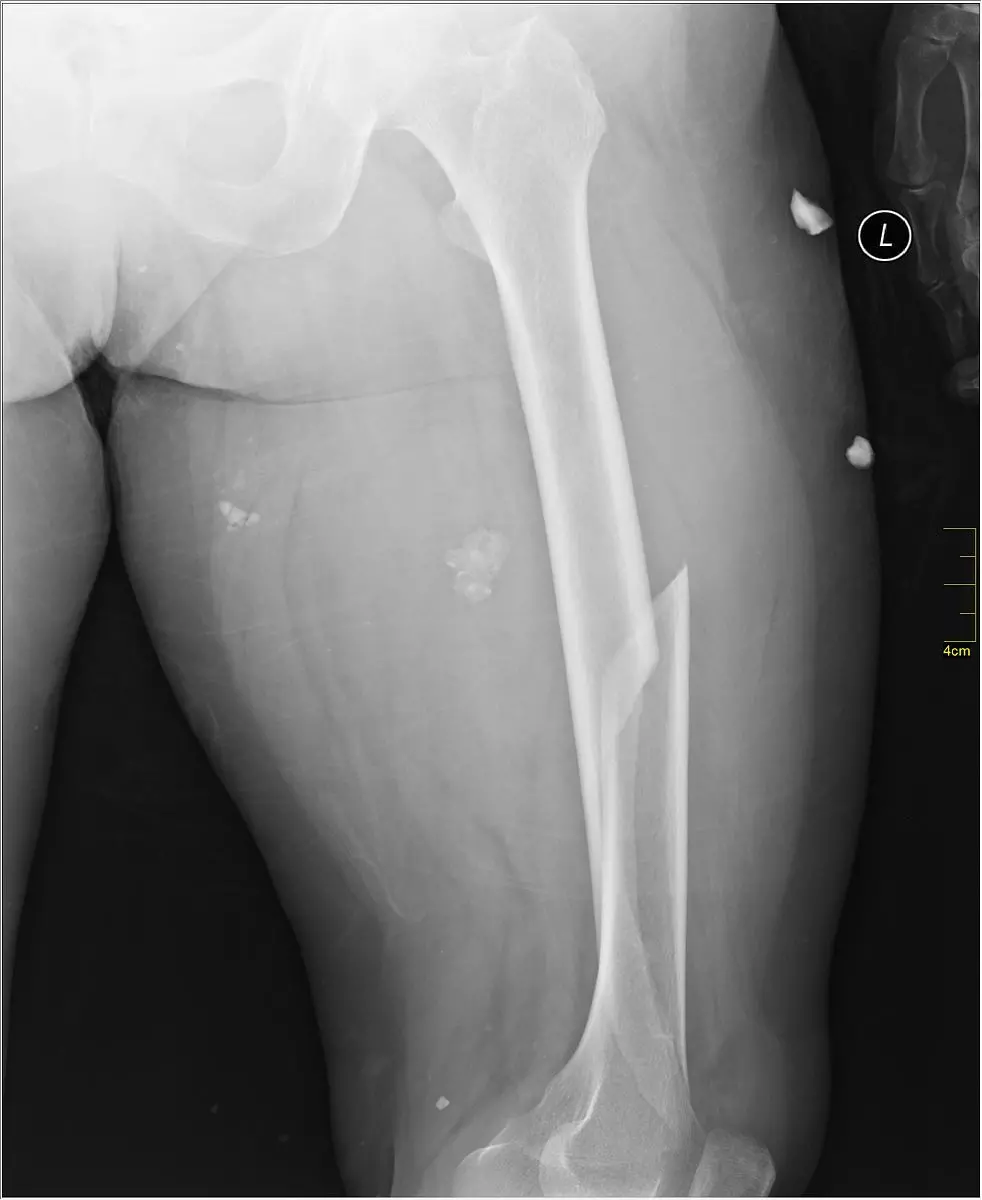Next Lesson - Conditions of the Hip
Core
Want more information on anatomy before you begin looking at conditions? Head to our articles on Muscles of the Thigh and Bones of the Lower Limb for more information!
A femoral shaft fracture can occur at any age, however in children/young adults, a high velocity trauma is required to damage the femur as it is a very strong bone in this age group. Usually the proximal fragment of the femur is abducted and flexed (due to attachments of gluteus medius, gluteus minimus and iliopsoas), and the distal fragment is adducted into a varus deformity and extended (due to attachments of adductors and gastrocnemius).
This condition often presents with a massively swollen thigh due to large amounts of bleeding from the femoral artery. The femoral nerve is also at risk of damage in a femoral shaft fracture. Treatment is usually a long leg cast if it is a non-displaced fracture or surgery to repair the bones with pins or plates if it is a displaced fracture.

Image - An X-ray of a femoral shaft fracture
Creative commons source by Nevit Dilmen [CC BY-SA 4.0 (https://creativecommons.org/licenses/by-sa/4.0)]
Distal femoral fractures are usually caused by sporting injuries in younger people (with significant displacement) or falls in elderly people (usually with less displacement). This condition presents with pain and swelling localising to the distal thigh. There is potential for injury to the popliteal artery if there is significant displacement, so an angiography may be required is there are diminished distal pulses after realignment. Treatment is surgery to reattach the bone fragments.
Meralgia paresthetica is a condition that involves the compression of the lateral cutaneous nerve as it pierces the inguinal ligament or fascia lata. Risk factors include obesity, pregnancy and diabetes. It presents with a burning/stinging sensation over the lateral thigh which is aggravated by standing/walking.
Conservative treatment such as losing weight and painkillers usually relieves the nerve compression but if symptoms persist, corticosteroid injections or anti-depressants/anti-epileptics may be used to reduce inflammation or pain symptoms respectively.

Diagram - The cutaneous nerve distribution of the thigh with the lateral cutaneous nerve distribution highlighted
Creative commons source by Dan Hoey [CC BY-SA 4.0 (https://creativecommons.org/licenses/by-sa/4.0)]
Reviewed by: Dr. Thomas Burnell
Edited by: Dr. Maddie Swannack
- 8345

